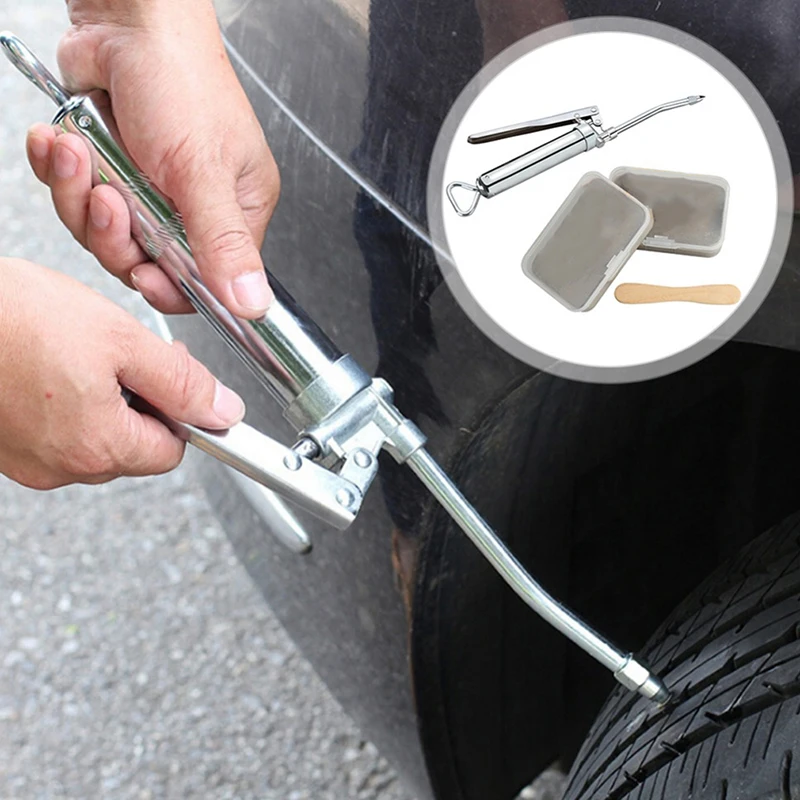Ask a question, get an answer ASAP!
GET A QUOTE
Tire Patch Cost
Service Location
Price range for all vehicles
(171,627)At some point in your driving career you may walk up to your vehicle and notice the ominous glint of a nail head in the tread of your tire. It’s an uneasy feeling when you have to drive with a nail in your tire. What do you do about it? Do you need to have it fixed right away? Is the tire even leaking?
Just because you have a nail in your tire doesn’t mean you'll have a flat tire. In some cases, the nail can be short enough that it doesn’t even penetrate through the tire’s airtight lining. In other cases, it’s trajectory may have missed the lining altogether. Or if the nail did puncture right through the liner, it may be sealed or nearly completely sealed around the offending nail.
Here’s what you should do:
Always keep a tire pressure gauge in your vehicle. You should check your tire pressure every other time you fill your fuel tank. If the tire is significantly lower on pressure than it should be, put your spare tire on, or have a mechanic do it for you, and have the tire with the nail in it professionally repaired or replaced as soon as possible. If the air pressure is only slightly low, top it up and bring your vehicle to a tire repair shop to have it fixed properly.
An often overlooked aspect of tire repair has to do with the steel belts inside the tire’s layers. When the tire is punctured, water, snow, and moisture can eat away at the steel belts and cause corrosion. This can compromise your tire and the belt might end up letting go and cause the tire to shimmy. Have the puncture hole repaired using a combination plug and patch, which is the only approved method of tire repair.
Unfortunately, there are areas of the tire that cannot be repaired, such as the shoulder and the sidewall. In both of these locations, there is too much flex and movement and a plug-patch will not hold. Also, if the puncture is in the tread but the hole is larger than a quarter inch, it cannot be repaired safely. Whether due to location or size, there are times that a tire repair is not possible and the tire must be replaced entirely.
Don’t take a chance driving with a nail in your tire. Have a professional inspect and repair your tire as soon as you can.
The most popular service booked by readers of this article is Tire Patch. YourMechanic’s technicians bring the dealership to you by performing this job at your home or office 7-days a week between 7AM-9PM. We currently cover over 2,000 cities and have 100k+ 5-star reviews... LEARN MORE
SEE PRICING & SCHEDULING
Tires
Tire Pressure
Puncture
Spare Tire
The statements expressed above are only for informational purposes and should be independently verified.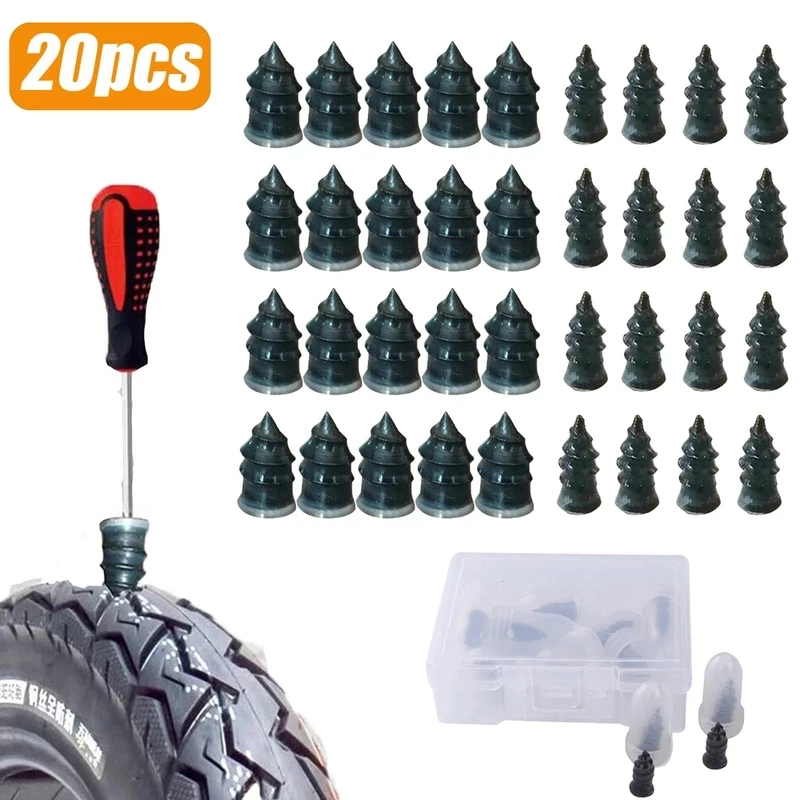 Please see our terms of service for more details
Please see our terms of service for more details
4.2 Average Rating
Service Hours
7 AM - 9 PM
7 days a week
Phone Number
1 (855) 347-2779
Phone Hours
Mon - Fri / 6 AM - 5 PM PST
Sat - Sun / 7 AM - 4 PM PST
Address
We come to you at no extra charge
Guarantee
12-month/12,000-mile warranty
Our certified mobile mechanics perform over 600 services, including diagnostics, brakes, oil changes, scheduled mileage maintenances, and will come to you with all necessary parts and tools.
Get a fair & transparent quote instantly before booking.
(
171,627
)
161,099
161,099
SEE REVIEWS NEAR ME
21 years of experience
237 reviews
Request Richard
Richard
21 years of experience
Request Richard
by Kenneth
Acura RSX L4-2. 0L - Window is not working - Bonita Springs, Florida
0L - Window is not working - Bonita Springs, Florida
Great and fast service!
by Robert
Honda Civic - Camshaft Position Sensor Replacement - Fort Myers, Florida
On time and very professional and helpful
22 years of experience
2223 reviews
Request Chris
Chris
22 years of experience
Request Chris
by Gary
Jeep Grand Cherokee V6-3.7L - Oil Change - Lake Elsinore, California
On time. Excellent service as usual.
by Theodore
Volvo V40 - Starter - Irvine, California
As always, Chris did an excellent job.
21 years of experience
1068 reviews
Request Pardeep
Pardeep
21 years of experience
Request Pardeep
by Ellen
Hyundai Santa Fe V6-2.7L - Tire Patch - San Jose, California
Very quick and efficiento
8 years of experience
23 reviews
Request Nestor
Nestor
8 years of experience
Request Nestor
by Denice
Hyundai Santa Fe V6-2. 7L - Tire Patch (Driver Side Front) - Boise, Idaho
7L - Tire Patch (Driver Side Front) - Boise, Idaho
Right on time, very knowledgeable and helpful on what needs to be done next. Thanks!
Our certified mobile mechanics make house calls in over 2,000 U.S. cities. Fast, free online quotes for your car repair.
GET A QUOTE
GET A QUOTE
How to Know What Tires to Buy
Your Your vehicle requires traction in order to accelerate, brake efficiently, and maintain control when you are steering. In order to do those things well, you need to own good tires on your vehicle. There are hundreds of different tire...
A Guide to Tire Safety
When When sitting behind the wheel of a car, there are two things that most drivers want: to reach their destination, and to do so as safely as possible. This means having a car that is in good condition, and. ..
..
How to Handle a Burst Tire
Tires burst when the tire pressure is too low or too high, there is a mechanical defect in the tire itself, or a foreign object damages the tire.
What do the service codes displayed in the Maintenance Minder™ mean?
While your Maintenance Minder™ is primarily designed to let you know when it’s time for your next oil change, it also displays codes for other needed services based on vehicle mileage. There are several different codes that can be displayed,...
P0755 & P0700 error codes
The problem with buying used tires and not having them balanced is the potential problems they can cause. Most transmissions - or more specifically, the Powertrain Control Module (PCM) which controls the transmission and drive line - contain incredibly tight...
Hi i have a 2009 dodge journey and it drives great but if you get over 70mph it starts pulsating.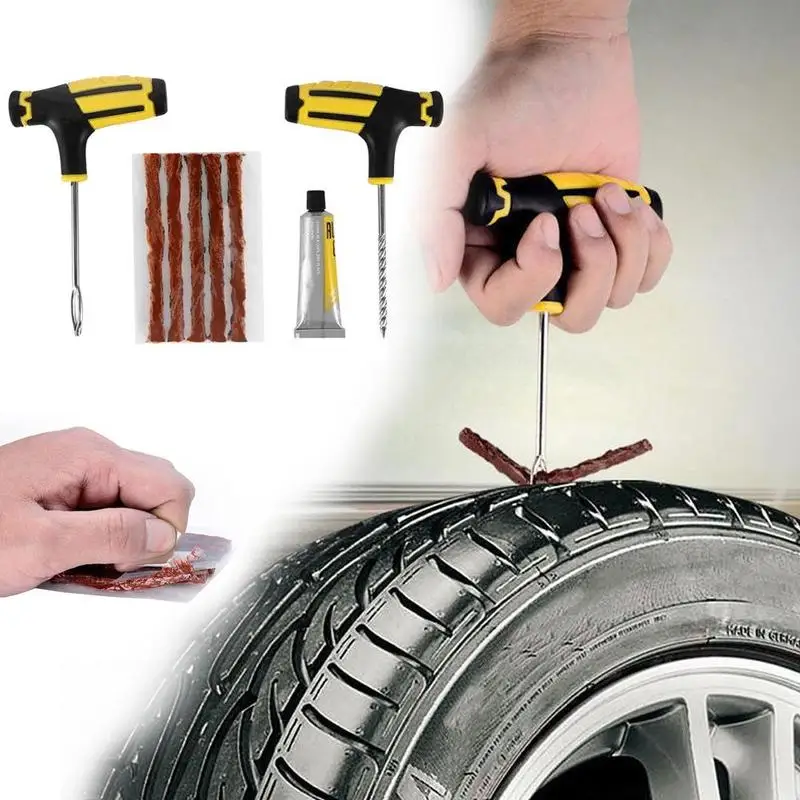 What could that be?
What could that be?
Hello, thank you for writing in. 85% of the time, when you have issues driving at high speeds, specially when you can feel them and hear them, you have an issue with your tires. The best place to start is...
Services
Cities
Maintenance
Our service team is available 7 days a week, Monday - Friday from 6 AM to 5 PM PST, Saturday - Sunday 7 AM - 4 PM PST.
1 (855) 347-2779 · [email protected]
Read FAQ
GET A QUOTE
So to top your day off you just found a nail in your tire! Though it may seem like a daunting or expensive task, this article will take all the guesswork out of how to easily fix a nail in your tire. We have already done the research and are ready to help.
To fix a nail in your tire, you'll need a tire plug kit. When repairing your tire, it is first important to locate the nail and then remove the nail using vice grips or pliers. After removing the nail, quickly use the tool provided in the kit to ream out the hole the nail was in. Then plug it, threading the plug tool while physically inserting the tire plug, pushing it in until the plug is fully inside the tire! Finally, refill your tire to the prescribed pressure (usually found labeled on the driver's door).
After removing the nail, quickly use the tool provided in the kit to ream out the hole the nail was in. Then plug it, threading the plug tool while physically inserting the tire plug, pushing it in until the plug is fully inside the tire! Finally, refill your tire to the prescribed pressure (usually found labeled on the driver's door).
It will be in your best interest to quickly fix your tire if it got a nail in it. In this post, we'll go into more detail on how to remedy this issue. We'll also cover other common questions when it comes to nail-related tire issues, so be sure to keep reading.
Before you continue reading, let us say we hope you find the links here useful. If you purchase something through a link on this page, we may get a commission, so thank you!
It is very important to limit your driving on your affected tire. Nails in tires pose both a risk to you as well as a risk to other drivers on the road. Punctured tires can lead to loss of vehicle control, create debris, and possibly cause a full rupture of your tire.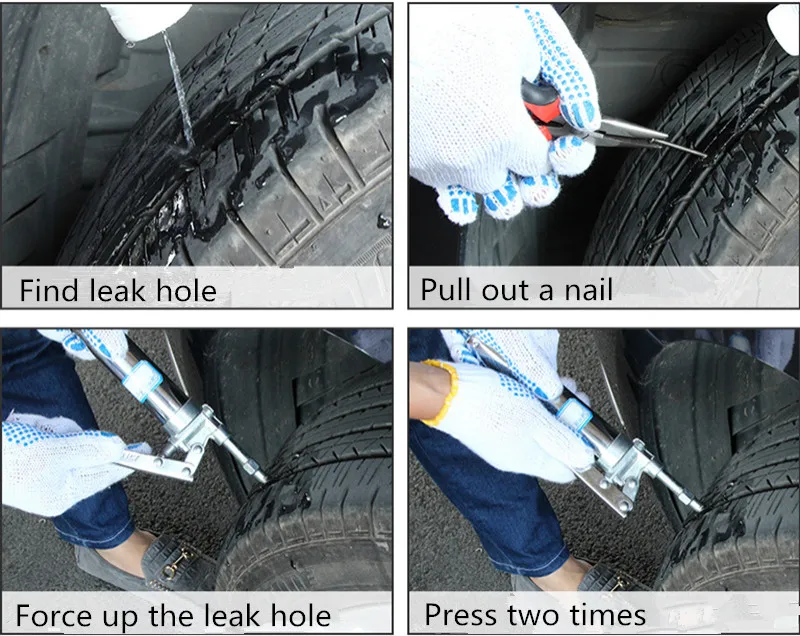
You should drive the absolute minimum amount on your turn before you fix the hole. Additionally, monitor your air pressure as you drive using your car's built-in sensors or by using a pressure gauge.
Check out this tire pressure gauge on Amazon.
Once you finish plugging your tire, it, unfortunately, will be your only chance to plug that tire. It is recommended by mechanics that you limit plugging your tire only once for your safety to prevent any unexpected rupturing of your tire. Plugging your tire should hold for the duration of the tire's life; however, occasional inspections of plug and air pressure are recommended.
Plugging your tire is an easy and inexpensive fix for a nail in your tire, but should not be prioritized as the method of choice if there is substantial damage to your tire. In this case, have your car towed to a certified mechanic to ensure your safety.
If the damage to your tire is minimal and won't pose an immediate threat to you or drivers around you, use your tire plugging kit.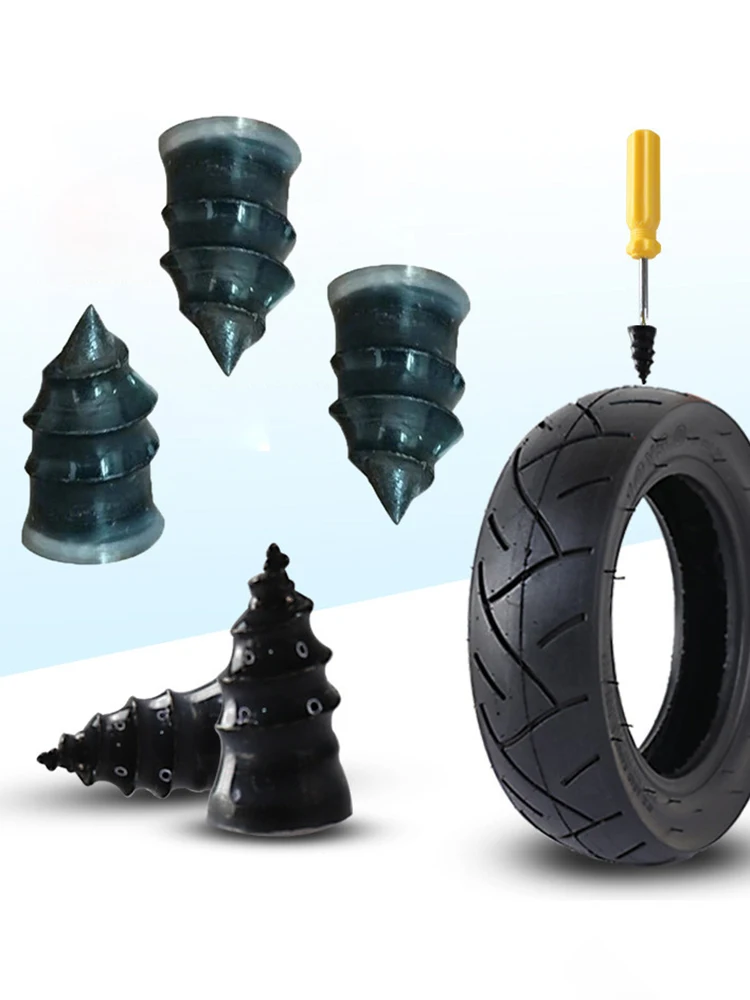 Tire repair kits include everything you need in them, and there are plenty of options available.
Tire repair kits include everything you need in them, and there are plenty of options available.
See this tire repair kit on Amazon.
Once you have your kit out and ready to use, follow these steps:
As mentioned earlier, the usual cost of fixing a tire with a nail in it will run you about 10 to 20 dollars, if using a tire repair kit. How large the puncture area is will make a difference in how much these costs end up being.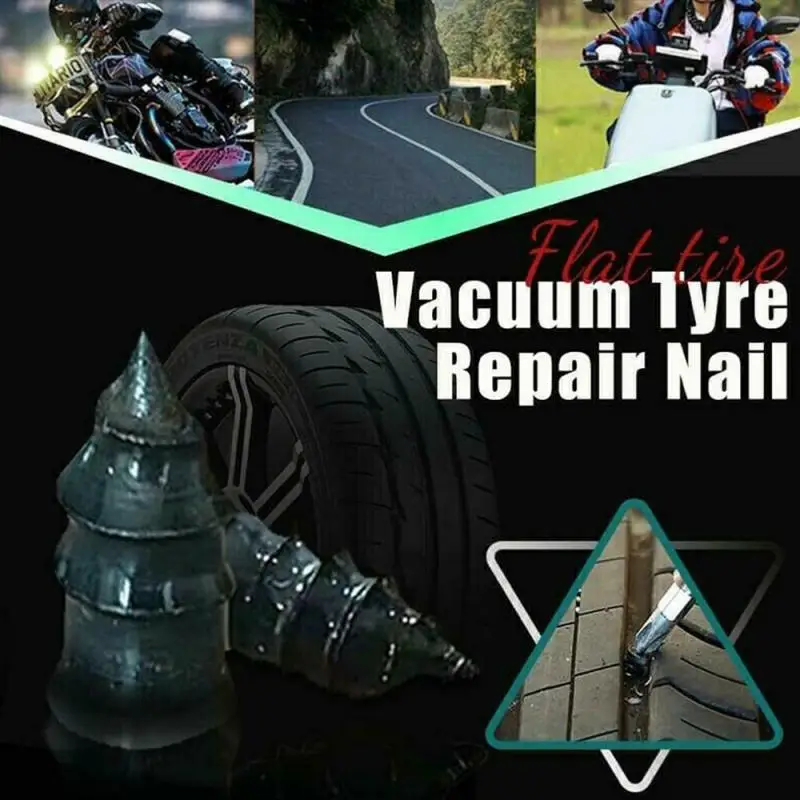
Additionally, if fixing your tire on your own is not something you have time to do or feel capable of doing, you will end up paying more for these services to be done for you. Repairing your tire at a shop, on average, will cost around $20 or so - it all depends on the rates that the shop charges.
With safety in mind, the best answer to this question is that a tire will last as long as the proper air tire pressure is maintained. This can easily become a nuisance since larger puncture areas cause quicker air leaks in your tire. However, there are some dangers in leaving a nail in your tire so it is recommended that if you know it's there, take care of it. In some cases, the nail can lodge itself so tight in the tire that air leaking out is unlikely to happen.
Nails and screws are not often found in your course of driving, whether it's on a road or a highway.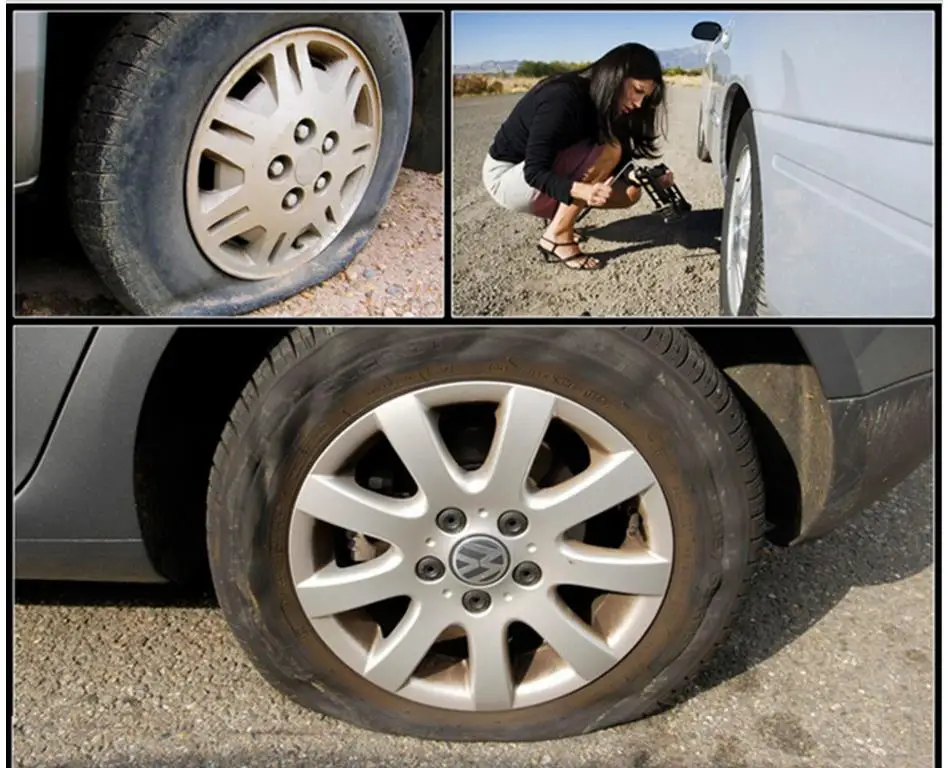 You are more likely to come across a nail, or screw, or something small that poses a threat to your tire, in parking lots, construction zones, the shoulder of a road, and dirt roads.
You are more likely to come across a nail, or screw, or something small that poses a threat to your tire, in parking lots, construction zones, the shoulder of a road, and dirt roads.
The shoulder of the road, even on the highway, can easily become a trap for these piercing items since this is where debris and sharp rocks collect. With all this said, practice being aware and paying attention to where and through what you are taking your car.
The primary, yet temporary, solution to a slow leak in a tire is to fill your tire up with air; driving on a flat, or partially flat tire, is dangerous and can cause damage to your wheel or other parts of your car. Finding where the slow leak is in your tire is the first step to what you should do. The best hack to finding this leak is as follows:
 The air leaking will cause the bubbles!
The air leaking will cause the bubbles!Once you have located the spot of the slow leak, it is best to seek a solution. Many newer model cars are already equipped with an aerosol sealant, which provides a quick fix and temporary solution.
For a permanent solution to a slow tire leak, you will need a plug and patch. Unless you are familiar with removing your tire and reinstalling it, it is advised that you bring your car to the shop for this one. This method requires that the tire is removed from the wheel - from here, the hole is “plugged and patched.”
If a nail pokes into the tire too close to the side wall, you are at risk of blowing out your tire if it hits a curb just right. Tires blowing out are one of the leading causes of automobile accidents. If you have noticed that a significant amount of air has leaked from the tire, do not attempt to drive. A major leak is at greater risk of a full tire blowout.
Fixing a tire with a nail in it is not a difficult process, and is one that can be done by utilizing a self-repair tire plug kit. These plug kits are easy to use and once you find the nail, can be installed within 15 minutes and for minimal costs. Before you go, be sure to check out some other posts that may be of interest to you:
These plug kits are easy to use and once you find the nail, can be installed within 15 minutes and for minimal costs. Before you go, be sure to check out some other posts that may be of interest to you:
Driving with Low Tire Pressure (How to Do So Safely)
Can You Drive on a Flat Tire?
www.adv.rbc.ru
www.adv.rbc.ru
www.adv.rbc.ru
Autonews
TV channel
Newspaper
Pro
Investments
+
New economy
Trends
Real estate
Sport
Style
National projects
City
Crypto
Debating club
Research
Credit ratings
Franchises
Conferences
Special projects St.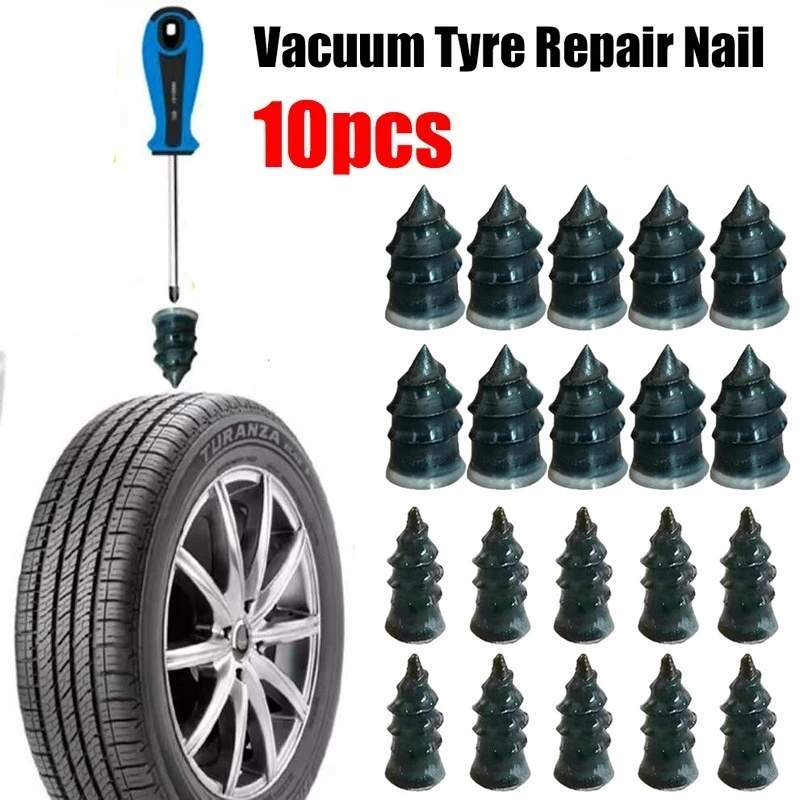 Petersburg
Petersburg
Conferences St. Petersburg
Special projects
Checking counterparties
Library
Podcasts
ESG index
Politics
Economy
Business
Technology and media
Finance
RBC CompanyRBC Life
www.adv.rbc.ru
Photo: Mikhail Tereshchenko / TASS
www.adv.rbc.ru
See also
Nail, rebar or sharp stone - sometimes you can damage a tire almost from scratch. First of all, the scale of damage is important, and often rubber can still be repaired. Most often, motorists turn to tire shops for repairs in the middle of autumn or spring - just in the season of replacing summer tires with winter tires and vice versa. In order not to stand in lines, it is worth knowing exactly when to go to the tire shop and when to go to the store.
Most often, motorists turn to tire shops for repairs in the middle of autumn or spring - just in the season of replacing summer tires with winter tires and vice versa. In order not to stand in lines, it is worth knowing exactly when to go to the tire shop and when to go to the store.
The most common "injury" to rubber is a puncture, and it can most often be repaired. Professionals in the nearest service will do it much faster, and your hands will remain clean. But if the puncture caught you in a deserted place, and there is a pump and a tire repair kit with harnesses in the trunk, you can patch up the tire yourself. Most often, when repairing the front tires, the wheel can not even be removed, it is enough to turn the steering wheel in the right direction and find the puncture site.
First, the hole is cleaned with a helical awl, the repair harness is smeared with glue and tucked into the eye of the awl, after which it is inserted into the tire hole. With a sharp movement, the tool is removed, and the tourniquet remains inside and securely clogs the hole. The tails are cut with a knife, but it is recommended to leave about 20 mm. After that, the tire can be inflated and the pressure checked.
The tails are cut with a knife, but it is recommended to leave about 20 mm. After that, the tire can be inflated and the pressure checked.
Repair with tourniquets is not considered long-term, because after some time they dry out and begin to let air through. A more advanced puncture repair method is vulcanization. The hole is sealed with an elastic patch, and the funnel at the puncture site is filled with a special compound. A vulcanizer is put on top, which heats the patch and solders the excess.
Under service conditions, the puncture is also repaired with cord fungus. The puncture site is processed and drilled to roughen. Everything is smeared with glue, after which a fungus is introduced from the inside of the tire, its cap is rolled, and the excess legs are cut off from the outside.
Photo: PA Images / TASS
A puncture can also be repaired with sealant. Many car manufacturers with run flat tubeless tires put compressor repair kits in the car instead of a spare tire - a bottle of pressurized sealant. The car is raised on a jack, after which the sealant is pumped into the damaged wheel through the nipple. Next, you need to spin the wheel and pump it up. After repair, the car should be driven a couple of hundred meters to check the tightness of the tire. If it has not recovered, the procedure is repeated.
The car is raised on a jack, after which the sealant is pumped into the damaged wheel through the nipple. Next, you need to spin the wheel and pump it up. After repair, the car should be driven a couple of hundred meters to check the tightness of the tire. If it has not recovered, the procedure is repeated.
It happens that a self-tapping screw or a nail closes the hole in the tire, remaining inside. Do not rush to pull it out - until the pressure drops, you can safely get to the service for vulcanization. Sometimes the wheel begins to blow off a few weeks after the self-tapping screw got into it. Therefore, it is better to check tire pressure periodically, and if the pressure sensor lights up, you should at least visually inspect the tire for a nail head.
A bump or bulge most often occurs on the side of a tire after hitting an obstacle or hitting a hole at speed. From the impact, the sidewall carcass threads are damaged, the tire ceases to hold the load and pressure, swelling appears.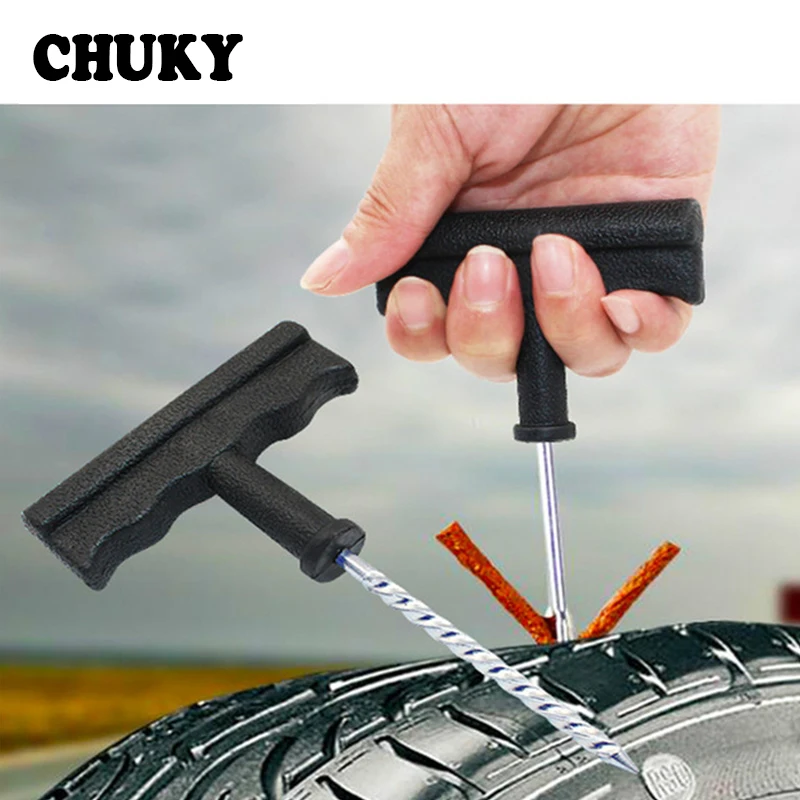 Any small bump eventually turns into a larger one, and with such a defect, the wheel can burst at any time. This is a direct safety hazard because a sudden flat tire can cause loss of control and a road accident.
Any small bump eventually turns into a larger one, and with such a defect, the wheel can burst at any time. This is a direct safety hazard because a sudden flat tire can cause loss of control and a road accident.
Some bulges can be repaired, but no patch will ever restore a tire to factory stiffness. The ideal option in this case is to replace the tire. If a hernia has appeared on the tread, then you can extend the life of the tire with the help of cord patches - ready-to-use patches with an adhesive layer. But if swelling is found on the sidewall, the likelihood of repair is minimal, the wheel is easier to change. Blisters on low profile tires are generally not repairable.
Only car service professionals can repair a side cut. Cord patches will be needed to repair the damage, but after some time the wheel will still have to be changed. This method will work only if the gap is not in the shoulder area of the tire, then no one will repair it.
In general, cuts or punctures, unlike punctures, are considered non-repairable, since the integrity of the frame is violated.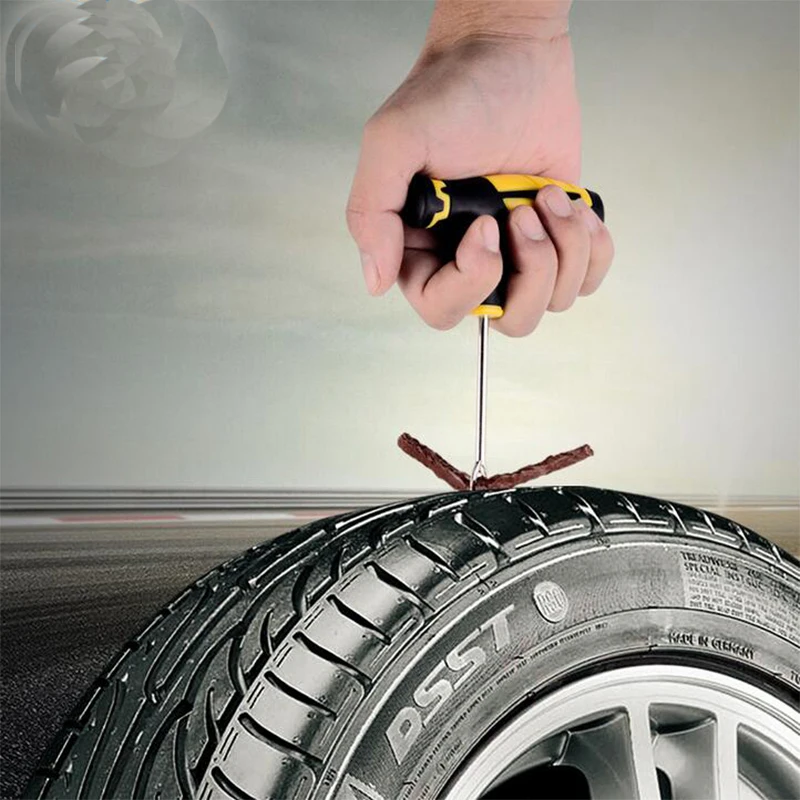 And breakdowns do occur on the go, when the tire abruptly loses pressure and has time to make only a few turns “on the rims” before it comes to a complete stop. In this situation, the cord breaks and the layers of the tire are destroyed. Even if it is possible to close the hole, it is not recommended to use such a weakened tire.
And breakdowns do occur on the go, when the tire abruptly loses pressure and has time to make only a few turns “on the rims” before it comes to a complete stop. In this situation, the cord breaks and the layers of the tire are destroyed. Even if it is possible to close the hole, it is not recommended to use such a weakened tire.
Photo: Mikhail Pletsky / Russian Look
Cracks, sidewall abrasions and unprofessional tire fitting can also lead to tire problems. Cracks can occur as a result of improper storage of tires. Their danger is that moisture begins to flow to the cord, and this already renders the frame unusable. Air can also escape through cracks. Cracks cannot be repaired and tires will not last long. A tire with cracks is deformed, blistered, and may even break while driving.
Rubbing against curbs or driving on uneven roadsides can damage the tire sidewall. When driving like this, it is worth inspecting the tires for damage regularly. If a slight wear is found, the wheels can be swapped, which will slightly extend their service life and allow you to delay the purchase of new ones.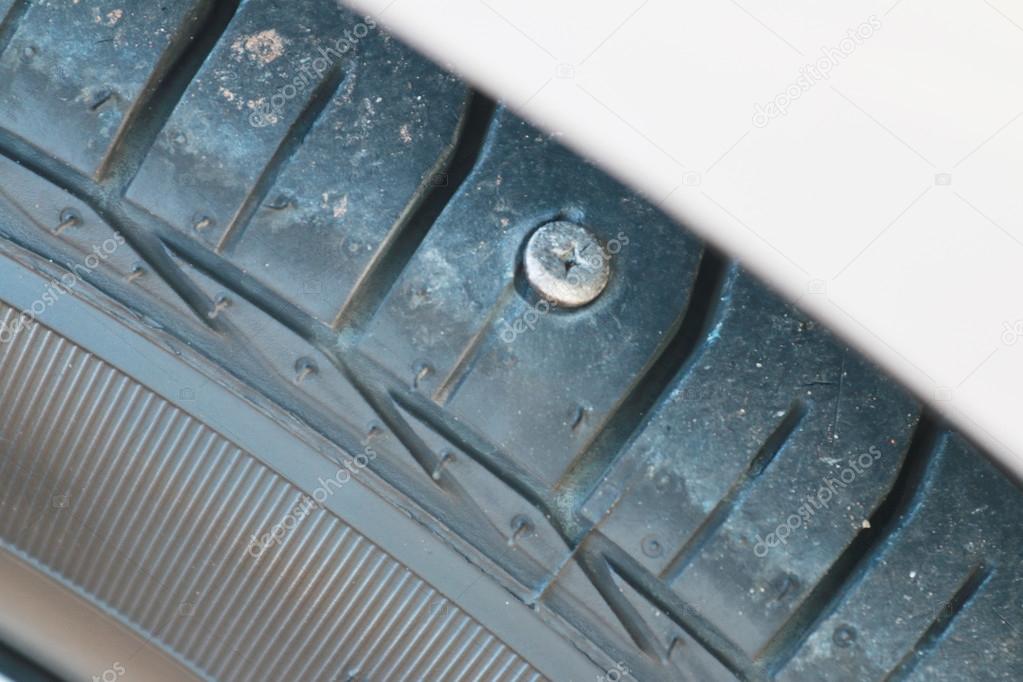
Improper fitting can damage the tire bead. In this case, the tire will lose its geometry and sit on a disc with a bevel, “eights” will be visible during rotation, and the driver will feel vibration while driving. It is impossible to repair this defect, the wheel must be changed as soon as possible, otherwise there is a risk of damage to the suspension.
How to Tires
www.adv.rbc.ru
www.adv.rbc.ru
A punctured tire on the road is a common thing: we put on a spare tire and go to a tire shop. But it happens that a nail or a screw is firmly stuck in the tire, but at the same time it does not blow off. Often the driver does not even know about it and continues to drive as if nothing had happened. But is it so safe, the AvtoVzglyad portal figured it out.
But is it so safe, the AvtoVzglyad portal figured it out.
Ivan Flyagin
Indeed, if a nail, self-tapping screw or other iron object pierces rubber with a sharp part, almost hermetically filling the hole and tightly closing it with a hat, then events can unfold in three conditional directions.
The first scenario is the most favorable, when the tire deflates very soon, and the driver detects this at least an hour later, and the maximum the next morning. There is nothing to do - you have to go to a car service.
The second option is when a metal object is stuck in rubber so tightly and thoroughly that the air from the inside comes out very slowly and imperceptibly. The car will continue to drive with a blown tire for a long time until tire pressure loss becomes apparent. This is a completely unfavorable course of events, because it can result in the third version of the scenario - the most dangerous one.
It can never be ruled out that while driving, the wheel will "catch" even a slight hole or bump, as a result of which the nail will suddenly change its location and the tire pressure will drop sharply and with the effect of an exploding bomb.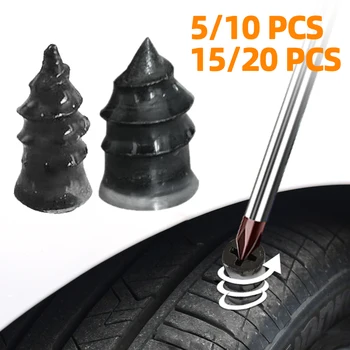 The higher the speed, the worse the road and the older the tire, the more likely this unpleasant scenario, which does not exclude the most serious accident with extremely sad consequences.
The higher the speed, the worse the road and the older the tire, the more likely this unpleasant scenario, which does not exclude the most serious accident with extremely sad consequences.
There is only one conclusion: it is necessary to check the wheels of your car as often as possible for such damage. Especially after trips to the countryside and after long and long journeys. You can do this yourself by driving the car onto a lift or into a "pit", or carry out diagnostics in a tire fitting.
So if you notice a nail in the wheel while traveling, immediately put on a spare tire and go to the nearest tire shop. Despite the tales of some experienced drivers with many years of experience about how they calmly drove for years with nails, screws, screws, crutches, fittings and other iron products stuck in the wheel, keep in mind - even if the nail "sits" in the rubber hermetically - It's still a dangerous time bomb.
159631
We remind you of another occasion to run into sanctions
32269
We remind you of another reason for one more reason: 9000 3269 9000
Telegram
